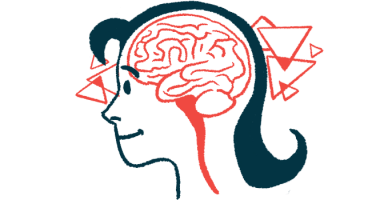Symptoms like a stroke may be seen in NMOSD patients over 50
Wrong diagnosis in woman, 58, led to treatment delays: Case

The clinical symptoms of neuromyelitis optica spectrum disorder (NMOSD) in people in their 50s or older may look like those of a stroke — which can delay proper diagnosis and treatment of the the progressive autoimmune disorder, according to a case report and systematic literature review.
That’s what happened to a woman in the U.S. in her late 50s, who was misdiagnosed after her initial NMOSD symptoms mimicked those of a certain kind of stroke.
This and another half-dozen previously reported similar cases highlight the need to consider NMOSD in patients showing stroke-like symptoms that persist despite medication and unexplained gastrointestinal problems, the researchers noted.
“Early recognition and treatment are pivotal to improving functional outcomes, preventing relapses, and limiting mortality,” the team wrote.
The study, “Neuromyelitis Optica Spectrum Disorder Mimicking Pontine Stroke: A Case Report and Systematic Literature Review,” was published in the journal Cureus.
Patient twice in 3 weeks showed stroke-like symptoms of NMOSD
NMOSD is a rare autoimmune disease marked by inflammation in the spinal cord and the optic nerve — the nerve that transmits signals between the eyes and brain. In some patients, the disease also may affect the brain, including the brainstem, the bottom portion of the brain that connects it to the spinal cord.
However, NMOSD symptoms can have similar features to those of other neurological diseases, which may lead to a misdiagnosis for some patients. Lab tests are a standard procedure to help distinguish the disorder, given that most patients are positive for antibodies that target the aquaporin-4 (AQP4) protein.
Now, researchers at Northwell Health, in Manhasset, New York, described the case of a 58-year-old woman with NMOSD who was first diagnosed with pontine stroke, a type of stroke that affects a specific region of the brainstem called the pons.
The woman sought treatment after experiencing blurry vision in both eyes, impaired sensation in the upper jaw, and muscle weakness of the right side of the body.
Three weeks earlier she had been treated at another hospital for vertigo and right-sided numbness and weakness. Imaging scans at that time found a lesion at the pons, which was believed to have resulted from an acute stroke.
A neurological examination at the researchers’ hospital showed the patient was alert and oriented to person, place, and time. She scored one in the National Institute of Health Stroke Scale, indicative of mild to moderate decrease in sensation.
There were no signs of speech or swallowing impairments, though the woman showed slightly reduced motor strength and sensation to touch on her right side.
A brain MRI confirmed a lesion in the left pons, which was deemed a sign of acute stroke. The woman was discharged with a therapeutic regimen to prevent blood clot formation and reduce cholesterol levels that can form plaques that clog blood vessels; all to ultimately lower the risk of a potential secondary stroke.
Blood work finally confirms NMOSD diagnosis
Several days later, however, the woman was admitted to the emergency room due to mild shortness of breath accompanied by considerable abdominal discomfort and reduced bowel movement. An abdominal CT scan revealed no signs of bowel obstruction, and she was given laxatives and discharged.
A few days later, the woman was again hospitalized after developing generalized weakness, with worsening of her right-side weakness, and speech difficulties. Other new symptoms included facial weakness or drooping, slightly altered right-side walking movements, and tinnitus, or hearing noises that do not come from an outside source.
A brain MRI scan revealed abnormalities, including in the brainstem, which were suggestive of inflammation likely of autoimmune origin.
Blood work showed the woman was positive for anti-AQP4 antibodies, confirming a NMOSD diagnosis. Tests for possible infectious agents came back negative.
She began intravenous or into-the-vein immunoglobulin (IVIG) therapy. IVIG delivers specific antibodies purified from healthy people to neutralize self-reactive antibodies in the bloodstream and block these antibodies’ abnormal production.
Despite the treatment, her condition deteriorated rapidly, with worsening abdominal pain and bulbar symptoms, which include problems chewing, swallowing, and speaking. She had to be intubated due to breathing problems and was transferred to the intensive care unit.
She also showed a severe disruption of bowel movements that required she be fed by a tube connected directly to her small intestine.
The woman started immunosuppressive treatment with intravenous methylprednisolone for five days, followed by a tapering course of oral corticosteroids. After the IVIG, she also underwent five days of plasma exchange, a blood-cleaning procedure, followed by rituximab. Sold as Rituxan and with biosimilars available, rituximab is commonly used off-label in NMOSD to reduce the number of B-cells, a type of immune cell that makes antibodies.
Clinicians find 6 other cases of misdiagnosis of stroke
The treatments led to marked improvements, and the woman was removed from the assisting breathing and feeding tubes. She was discharged and admitted to an acute rehabilitation facility, with only minor muscle weakness.
One month later, she showed normal cognitive activity, with intact language and memory, and her speech was fluent, without problems. She also recovered her limb muscle strength to the full, while still showing slightly reduced facial strength and tone. Abdominal issues were resolved.
The case prompted researchers to conduct a literature review for similar cases published between 2002 and 2022. The team found six cases of NMOSD patients, with ages ranging from 52 to 84, who were initially diagnosed with an acute stroke.
Our case and literature review illustrate that late-onset NMOSD can present as a stroke mimic.
In every case, the progression or recurrence of symptoms prompted further clinical evaluations until an NMOSD diagnosis was reached. The presence of anti-AQP4 antibodies was the main diagnosis criterium.
In all seven cases — including this report — the patients’ symptoms appeared at an age older than the typical age of NMOSD onset (median of 58 vs. 32-41 years). All but one case were women.
Methylprednisolone was the medication of choice to start the treatment, which also included steroid tapering and other types of immunosuppressive therapies such as rituximab.
Pneumonia “was the most predominant complication, with one patient eventually succumbing at follow-up,” the researchers wrote.
Overall, “our case and literature review illustrate that late-onset NMOSD can present as a stroke mimic,” the team wrote.
Particular attention is needed to consider “NMOSD in individuals presenting with atypical stroke-like syndromes, particularly those with progressive or recurrent symptoms seemingly related to posterior [brain] circulation and/or unexplained [simultaneous] gastrointestinal manifestations,” the researchers concluded.









